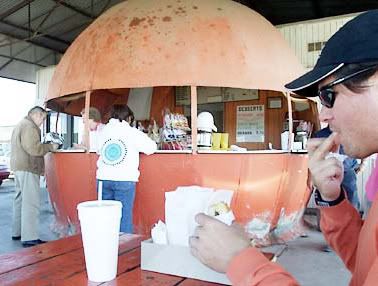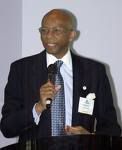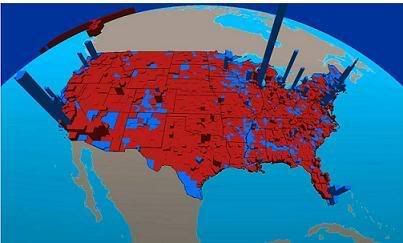X-posted at Progressive Sundae
The special election to replace Ellen Tauscher in CA-10 is taking an ugly turn. The CDP has announced that its endorsement caucus will take place on August 1, and I’m already having flashbacks to Migden-Leno and the 2008 CDP convention.
You see, even though major flaws in the endorsement process were exposed over a year ago, nothing has changed; nor is there, at least to date, any apparent desire on the part of the CDP to address a situation where powerful outsiders are invited to skew the outcome of endorsements in local races.
I’ll do my best to explain it all on the flip…
First a brief lesson in how the endorsement process works in a special election. The chair of the party picks a caucus date and location, and all the members of the California DSCC (Democratic State Central Committee) who live within the district meet and cast their votes. In order to win the endorsement of the CDP, a candidate must receive 60% of the votes cast by these local party members.
So what is the DSCC and how do you become a member of it? Well, statewide, the DSCC is comprised of about 2800 people. Approximately one-third of them are elected by County Central Committees every two years; approximately one-third of them are elected through the ADEMs every two years; approximately one-third of them are appointed by elected officials (or nominees) and serve at their pleasure.
So the Central Committee and AD delegates serve for fixed two-year terms, but the people appointed by the electeds can be changed purely at the whim of their elected. And, as it turns out, there is no requirement in the CDP bylaws that the electeds select their appointees from within the district they represent.
So now that the endorsement caucus has been set for August 1, we can start to examine who will be showing up to vote that day. There will be members elected to the DSCC through the Central Committees of Alameda, Contra Costa, Sacramento, and Solano Counties — but only the ones who physically reside in CA-10. So, for instance, if you’re a DSCC member elected by the Solano Central Committee and you live in Fairfield (CA-10), you can attend the caucus; but if you’re a DSCC member elected by the Solano Central Committee and you live in Vacaville (CA-07), no dice. Same thing goes for the AD delegates. But it’s an entirely different story for the appointees of the electeds.
At least in theory, every Democratic state officer, Senator, Congressmember, State Senator, and Assemblymember in the entire state could dismiss their current appointees and replace them with people who live within CA-10 and are therefore qualified to vote in the caucus. And that’s a lot of appointees. The CDP Bylaws (PDF, Art. II, Sect. 2, beginning on P. 2) spell out how the appointees are allotted:
- State Officers — 6 delegates each
- US Senators — 6 delegates each
- US Congressmembers — 5 delegates each
- State Senators — 6 delegates each
- State Assemblymembers — 5 delegates each
(And those nominees who ran for the offices listed above but did not win their election are allowed to appoint ½ the number of delegates as their elected counterparts — either 3 or 2, depending on the office).
So what’s happening in CA-10 right now? Well, reports have surfaced that the campaigns are pulling out all the stops to get electeds to replace their appointees with CA-10 residents.
So, several of the CD10 Democratic candidates’ campaign teams have in the past couple of weeks lobbied elected officials from up and down the state and asked them to appoint as their delegates folks who live in the 10th District and support their respective candidates.
As a result, the number of delegates in the 10th District has expanded to as many as 300, sources say. Reports put state Sen. Mark DeSaulnier in the delegate count lead over Lt. Governor John Garamendi and Assemblywoman Joan Buchanan.
Well, that makes sense. A cursory look at the endorsements listed on the major candidates’ websites shows the following:
- Joan Buchanan: Not listing her endorsements at this time.
- John Garamendi: Five Congressmembers and one Assemblymember, for a total of 30 potential appointees.
- Mark DeSaulnier: One state officer, four Congressmembers, eleven State Senators, and eight Assemblymembers, for a total of 142 potential appointees.
Now, we currently have no way of determining whether the electeds who have endorsed are backing up their endorsements by appointing CA-10 residents (or, for that matter, whether electeds who have not formally endorsed are doing likewise). But just speculating, based on the raw numbers, it would look like Mark DeSaulnier is going to be the big winner of this sweepstakes. After all, he has a lot of friends from having served recently in both the Assembly and the Senate, and he has a major Congressional cheerleader in Rep. George Miller.
Indeed, if that 300 number is accurate, there’s already more stacking taking place than occurred even in the Migden-Leno conflagration of 2008. It’s exactly this kind of raw power play that turns loyal local Democrats who have been plugging away on behalf of their candidate into cynics who end up walking away from Democratic politics. And I’m saying this as someone who definitely leans toward supporting the beneficiary of this cronyism.
Here’s the thing. Whether they find the practice acceptable or repugnant, all campaigns are going to play the hand they’re dealt. And when the CDP bylaws offer candidates the opportunity to exploit the delegate selection process, they have to take it; frankly, they can do no less.
But, you know what? It doesn’t have to be that way. We now have a CDP chair who campaigned on the issue of reform. John Burton has been giving a lot of lip service to “grassroots activists”; yet here is a perfect example where the local stakeholders are being pushed aside by the electeds who are stacking the deck against them. If Burton really intends to walk the talk, he might want to start by taking action to amend the bylaws so that electeds are required to appoint their delegates from within their district.
It may be too late for CA-10, but this kind of rigged endorsement process should never be allowed to happen again.


 On Highway 99, near Chowchilla, stands a vacant metal building with a canopy that shelters a
On Highway 99, near Chowchilla, stands a vacant metal building with a canopy that shelters a  Unfortunately, the Democratic definition of “targeting” seems to bear an uncanny resemblance to catnapping. Take, for example, the City of San Ramon elections for mayor and City Council that were scheduled for this November.
Unfortunately, the Democratic definition of “targeting” seems to bear an uncanny resemblance to catnapping. Take, for example, the City of San Ramon elections for mayor and City Council that were scheduled for this November.  San Ramon Mayor Abram Wilson has loaned his campaign $95,000. He has received $18,474 from other contributors.
San Ramon Mayor Abram Wilson has loaned his campaign $95,000. He has received $18,474 from other contributors.